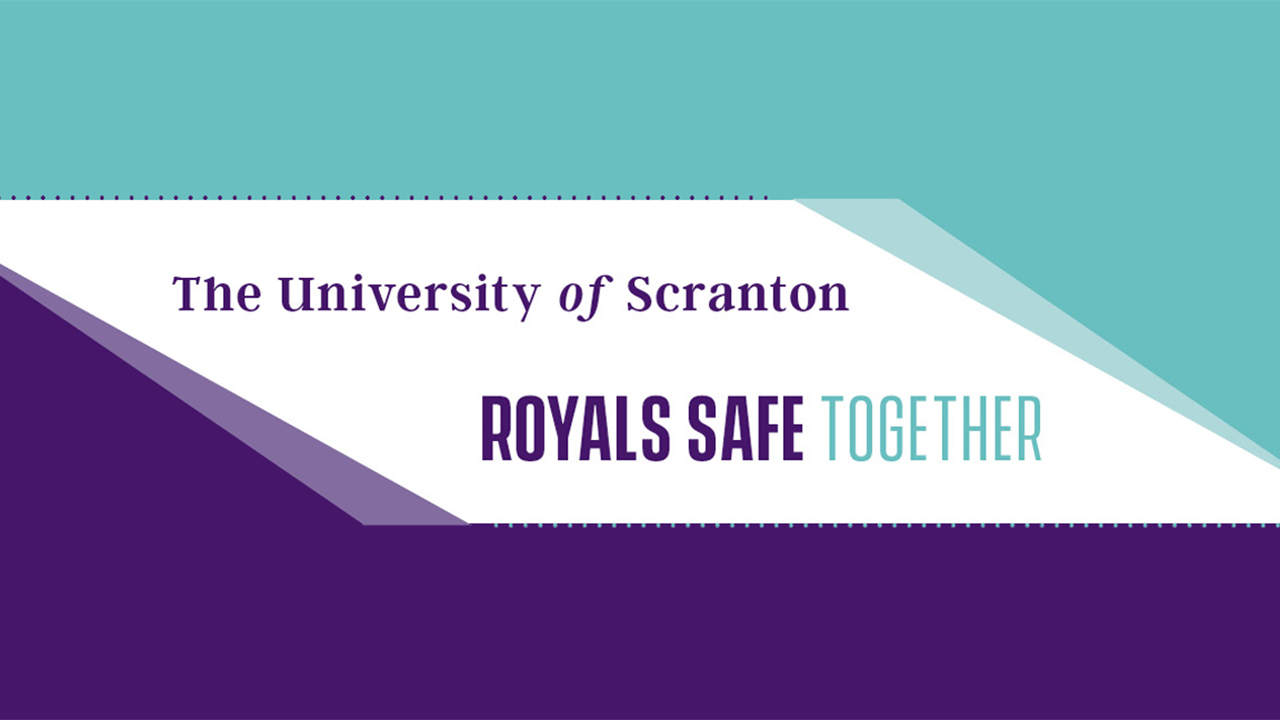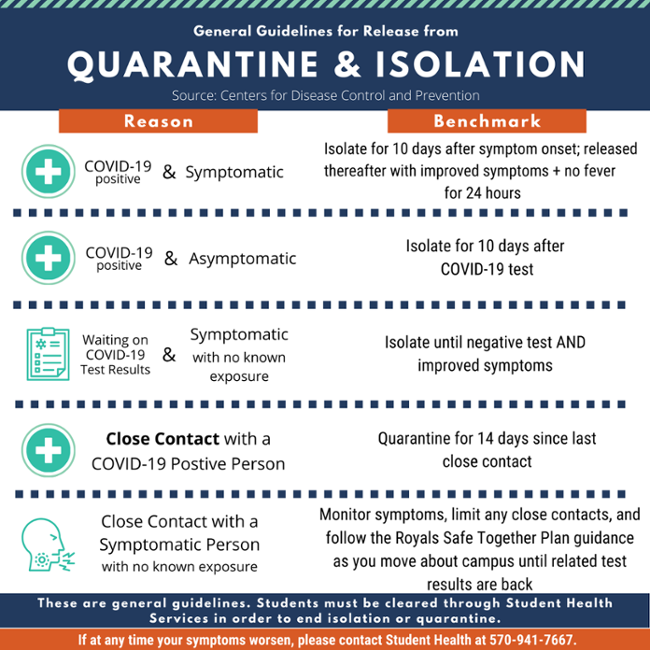FAQs: Quarantine and Isolation

You may know by now that there's a difference between quarantine and isolation, but what are they exactly? And how do you know how much time you might spend quarantining or isolating if you’ve tested positive, have symptoms or come in close contact with someone who has tested positive?
Students must be cleared through Student Health Services in order to end isolation or quarantine, but a helpful graphic with general guidelines on how long each might last depending on your situation is posted below, as well as on the Student Health Services website.
What is “isolation” and who is placed into isolation?
Isolation is used to separate people infected with COVID-19 from people who are not infected. People who have tested positive for COVID-19 or those who have COVID-19 symptoms and are awaiting test results must isolate to avoid transmission of the virus. Isolation is generally for 10 days after symptom onset provided symptoms are improving and fever has resolved for 24 hours without any fever-reducing medications. In the case of asymptomatic COVID-19 persons, isolation is generally for 10 days from the date the test was collected.
What is “quarantine” and who is placed into quarantine?
Quarantine separates and restricts the movement of people who were exposed to COVID-19 to see if they become sick. People who have had close contact with a person who has tested positive for COVID-19 are quarantined to avoid possible transmission of the virus. Quarantine lasts for 14 days after the last close contact with a person who tested positive for COVID-19.
What constitutes “close contact”?
A “close contact” is a person who has close contact (closer than 6’ for 15 minutes or more) with a person who is has tested positive for COVID-19. This would include any person who has had physical contact through hugging, kissing, sharing utensils or similar contact with a person who has tested positive for COVID-19.
What are the guidelines the University is using to release a student from isolation or quarantine?
The University is generally utilizing metrics based on the CDC guidelines with each case reviewed by clinical staff members in Student Health Services. The image below shares the general guidelines utilized by the University for release from quarantine or isolation:
Visit the Student Health Services site to find more frequently asked questions regarding the University's COVID-19 procedures particularly as it relates to isolation, quarantine and testing. Should you have additional questions, please email studenthealthservices@scranton.edu.
For more about the Royals Safe Together Reopening Plan, visit scranton.edu/RoyalsSafeTogether.







